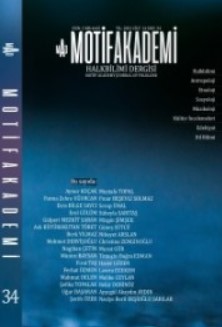SOMUT OLMAYAN KÜLTÜREL MİRAS - KÜLTÜREL YARATICI ENDÜSTRİLER ETKİLEŞİMLERİNE KÜLTÜREL İSTATİSTİKLER ÇERÇEVESİ’NDEN BAKMAK
LOOKING AT INTERACTIONS BETWEEN INTANGIBLE CULTURAL HERITAGE AND CULTURAL CREATIVE INDUSTRIES THROUGH THE 2009 UNESCO FRAMEWORK CULTURAL STATISTICS
Author(s): Erol GülümSubject(s): Cultural history, Customs / Folklore, Sociology of Culture, Economic development
Published by: Motif Halk Oyunları Eğitim ve Öğretim Vakfı
Keywords: Living heritage; cultural creative sectors; creative economy; folklore; traditional knowledge;
Summary/Abstract: Practical, functional and dynamic models that frame interactions between intangible heritage and cultural creative sectors can be taken as reference when discussing these issues are of great importance in problematizing, measuring and developing the contributions of living cultural heritage to local, regional and national sustainable economic development. The 2009 UNESCO Framework for Cultural Statistics (FCS) provides a model that can be referenced in these matters. The structural composition and organization of 2009 FCS, which is one of the most functional models that embody the interactions between living cultural heritage and cultural creative industries, point out that the intangible heritage is a raw material, creativity, innovation, design and branding resource for cultural creative industries. The model also can provide practical benefits in terms of defining, developing and regulating the relationships between cultural areas that present the manifestations of living cultural heritage and the sectors that make up the creative cultural industries. In line with these objectives first of all, the development course of cultural creative industries and their relationship with intangible cultural heritage will be discussed. Later, some information will be given about the emergence conditions, basic characteristics and structures of the 1986 and 2009 versions of the Cultural Statistics Framework. Finally, with the structural analysis to be made on the model, what kind of raw material the living cultural heritage is in terms of cultural creative sectors, the transfer of creativity and innovation cultures inherent to the living heritage in terms of cultural creative industries and the individual relations between the cultural cultural areas presented in the model and the intangible heritage evaluations will be made.
Journal: Motif Akademi Halkbilimi Dergisi
- Issue Year: 14/2021
- Issue No: 34
- Page Range: 468-483
- Page Count: 16
- Language: Turkish

